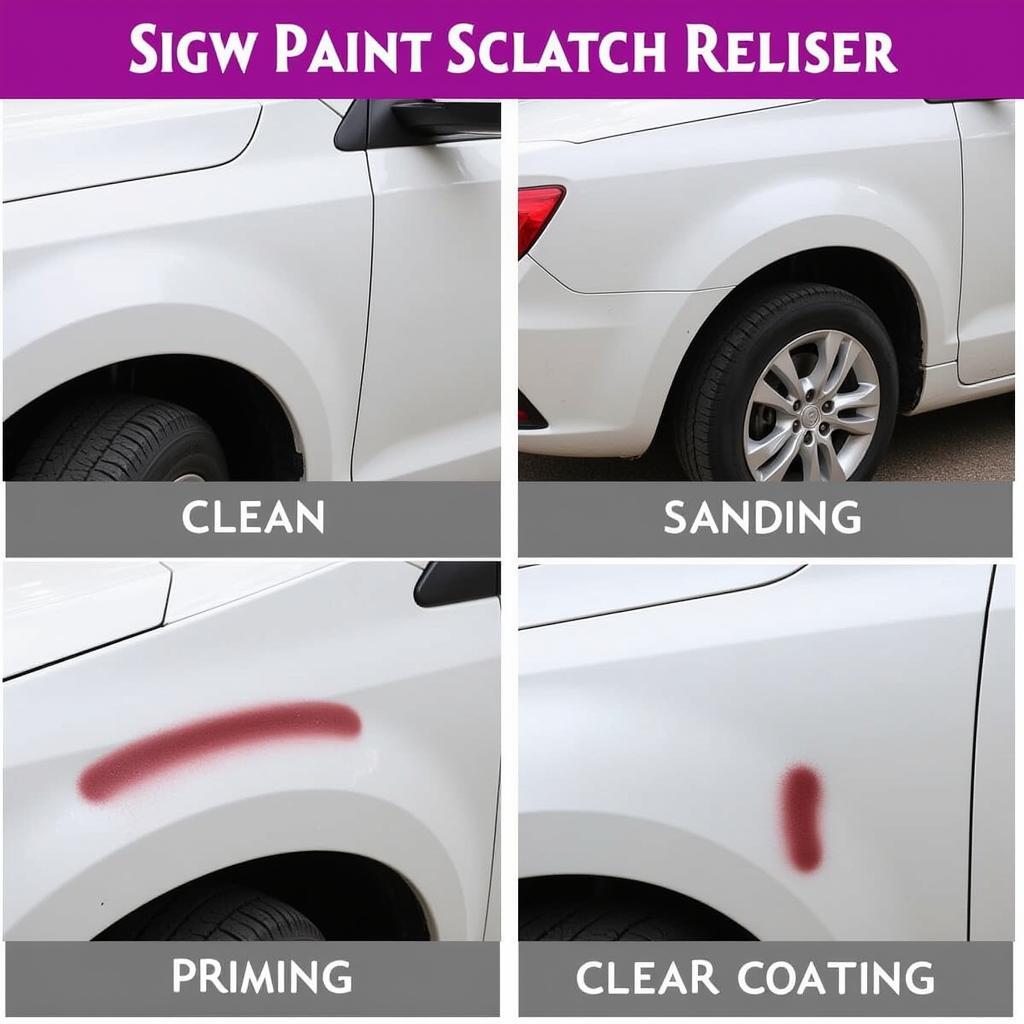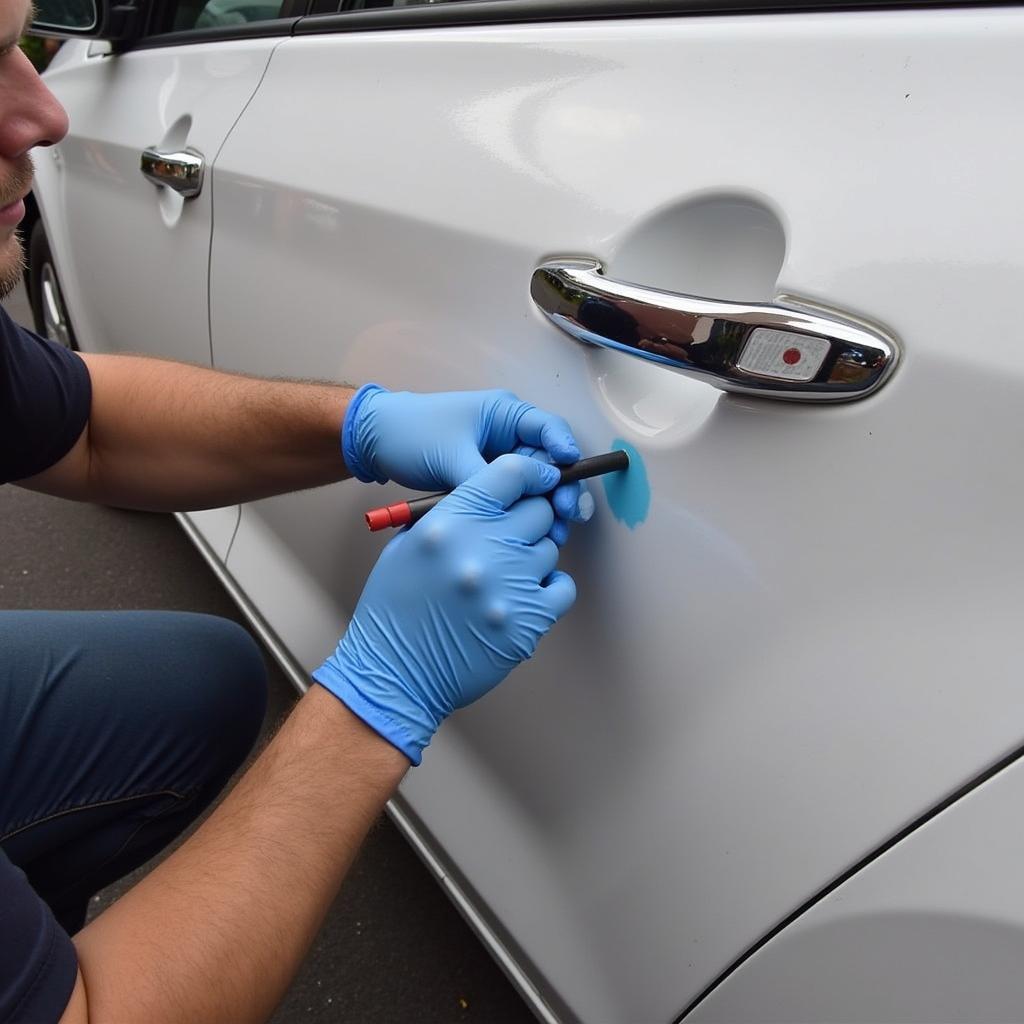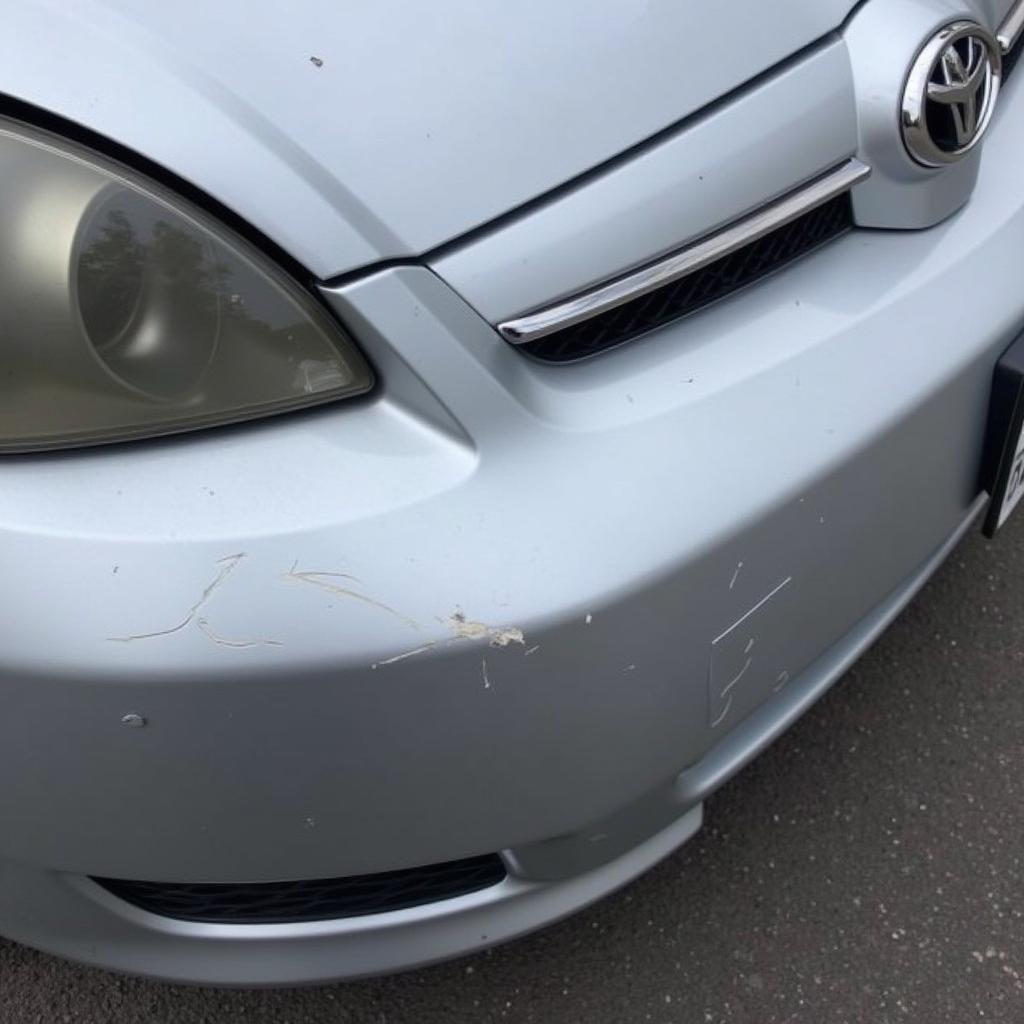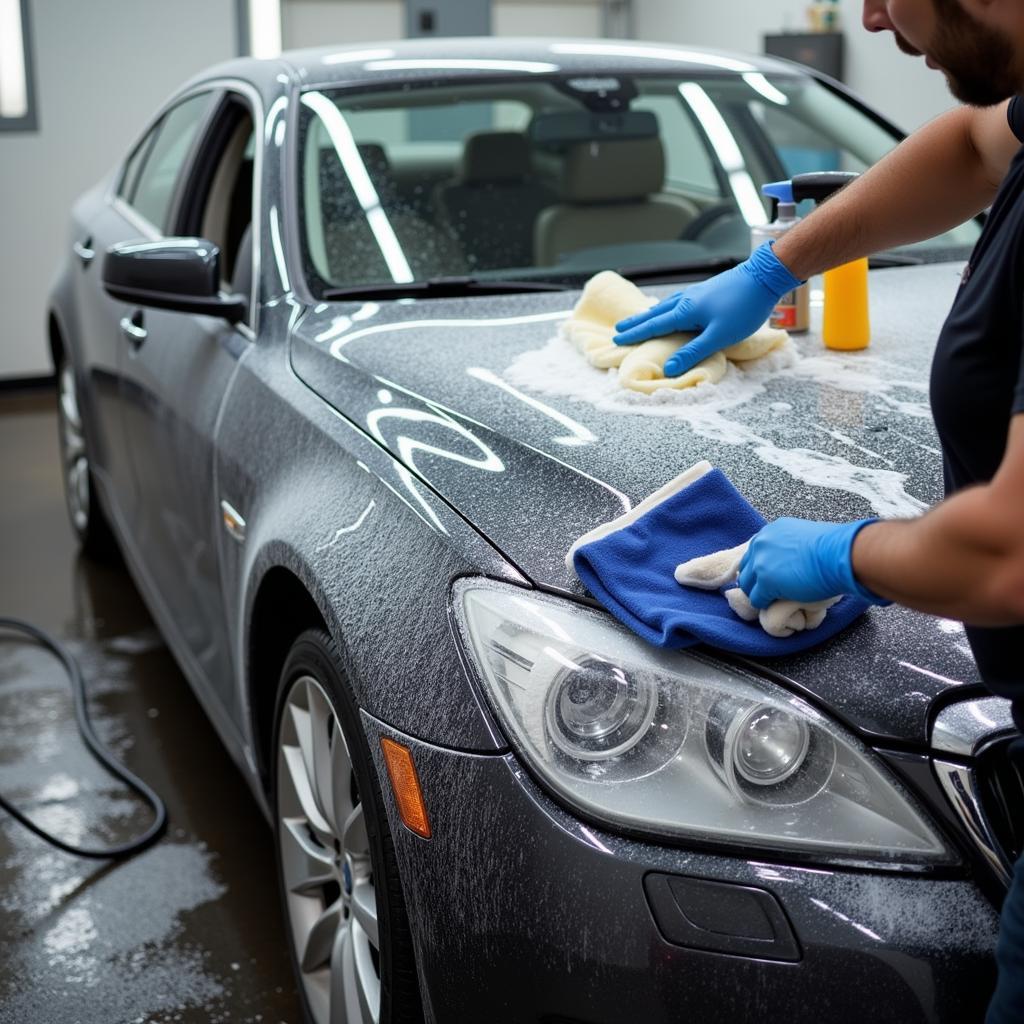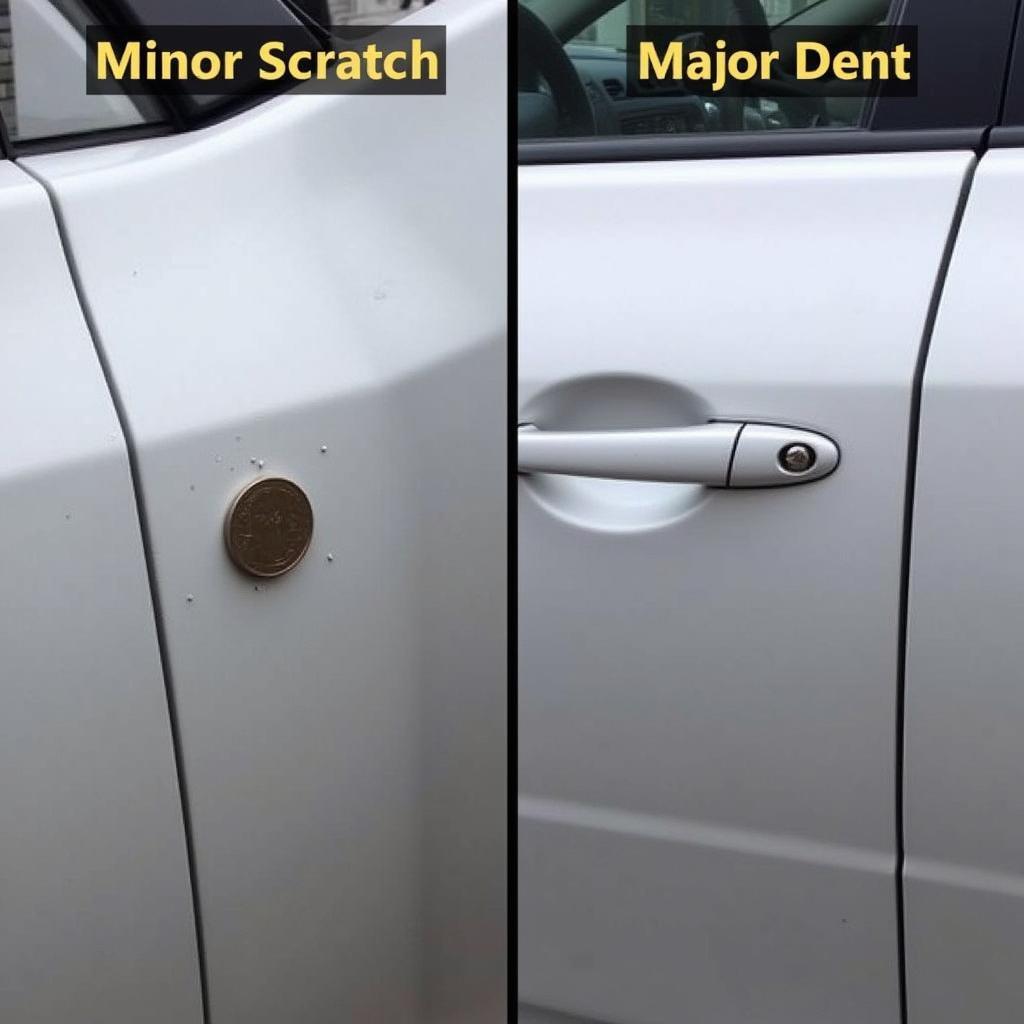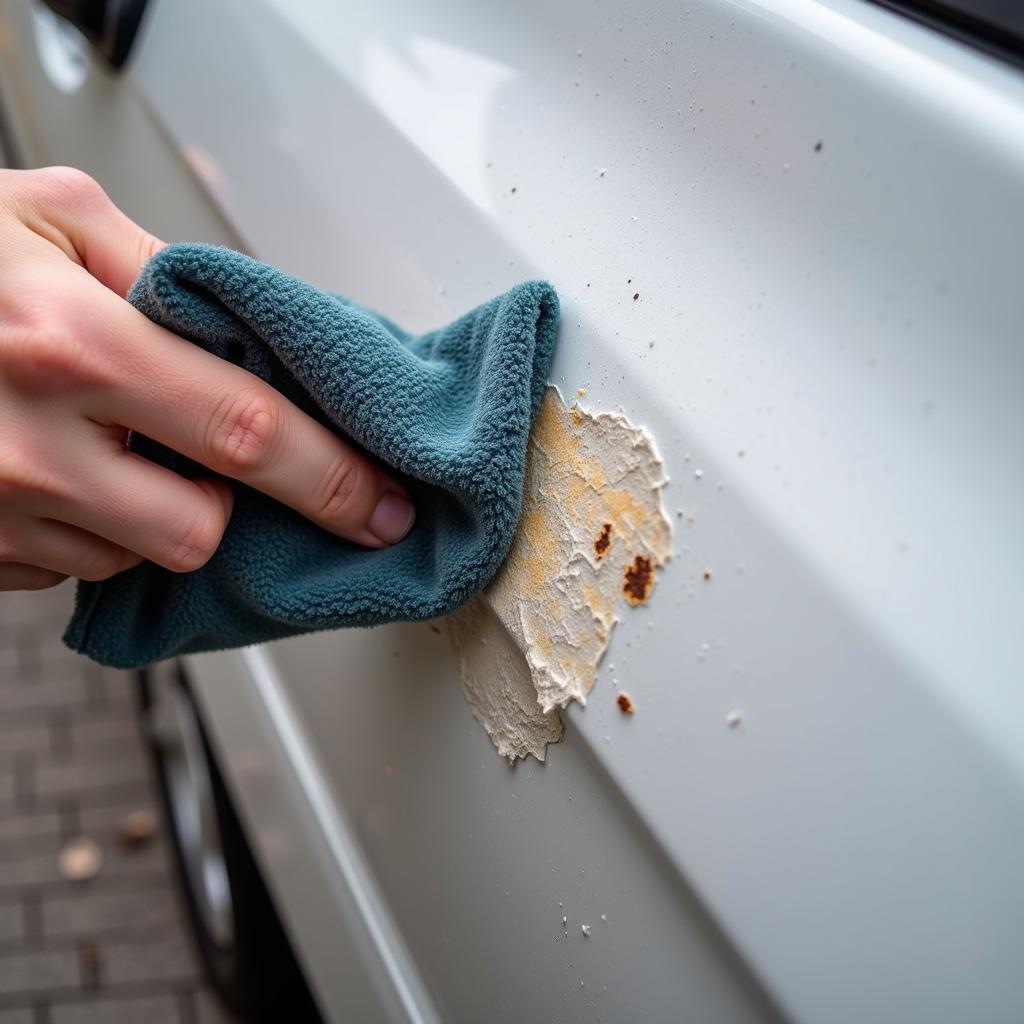
Cleaning the rusted paint chip before repair
Rust on your car is like a cavity on a tooth – if left untreated, it can quickly spread and cause significant damage. Learning how to repair rusted paint chips on a car is essential to preserving its value and appearance. This guide will provide you with a step-by-step process to effectively tackle those pesky rust spots before they become a major problem.
After identifying the rusted paint chips, gather the necessary materials. You’ll need sandpaper (various grits), primer, touch-up paint that matches your car’s color, clear coat, masking tape, a rust remover, and some rubbing compound. A clean, soft cloth and a wax applicator pad will also come in handy. Don’t skimp on the quality of these materials, as they directly impact the final result. Choosing high-quality products will ensure a more durable and professional-looking repair. Remember, a little investment now can save you a lot of money on extensive bodywork later.
You can also consider professional car paint repair sioux falls if you’re in the area.
Assessing the Damage: Know Your Enemy
Before you begin the repair process, it’s crucial to assess the extent of the rust. Is it just surface rust or has it penetrated deeper into the metal? Surface rust often appears as small, orange-brown spots and can be relatively easy to treat. However, if the rust has eaten through the paint and into the metal, it requires more extensive repair.
Preparing the Area: A Clean Slate for Repair
Thoroughly clean the area around the rusted paint chip with soap and water. This removes dirt and grime that could interfere with the repair process. Once the area is dry, use masking tape to protect the surrounding paint from scratches during sanding.
 Cleaning the rusted paint chip before repair
Cleaning the rusted paint chip before repair
Removing the Rust: The Heart of the Matter
Use a rust remover or sandpaper to eliminate all traces of rust. Start with coarser grit sandpaper and gradually move to finer grits for a smooth finish. Be patient and thorough during this step, as any remaining rust will continue to spread beneath the new paint. For deeper rust, you may need to use a wire brush or a rust converter. A wire brush helps remove loose rust, while a rust converter chemically transforms rust into a paintable surface.
Priming the Surface: Laying the Foundation
Apply a thin, even coat of automotive primer to the sanded area. Primer helps prevent future rust and provides a better surface for the paint to adhere to. Allow the primer to dry completely according to the manufacturer’s instructions. This step is essential for a long-lasting and professional-looking repair.
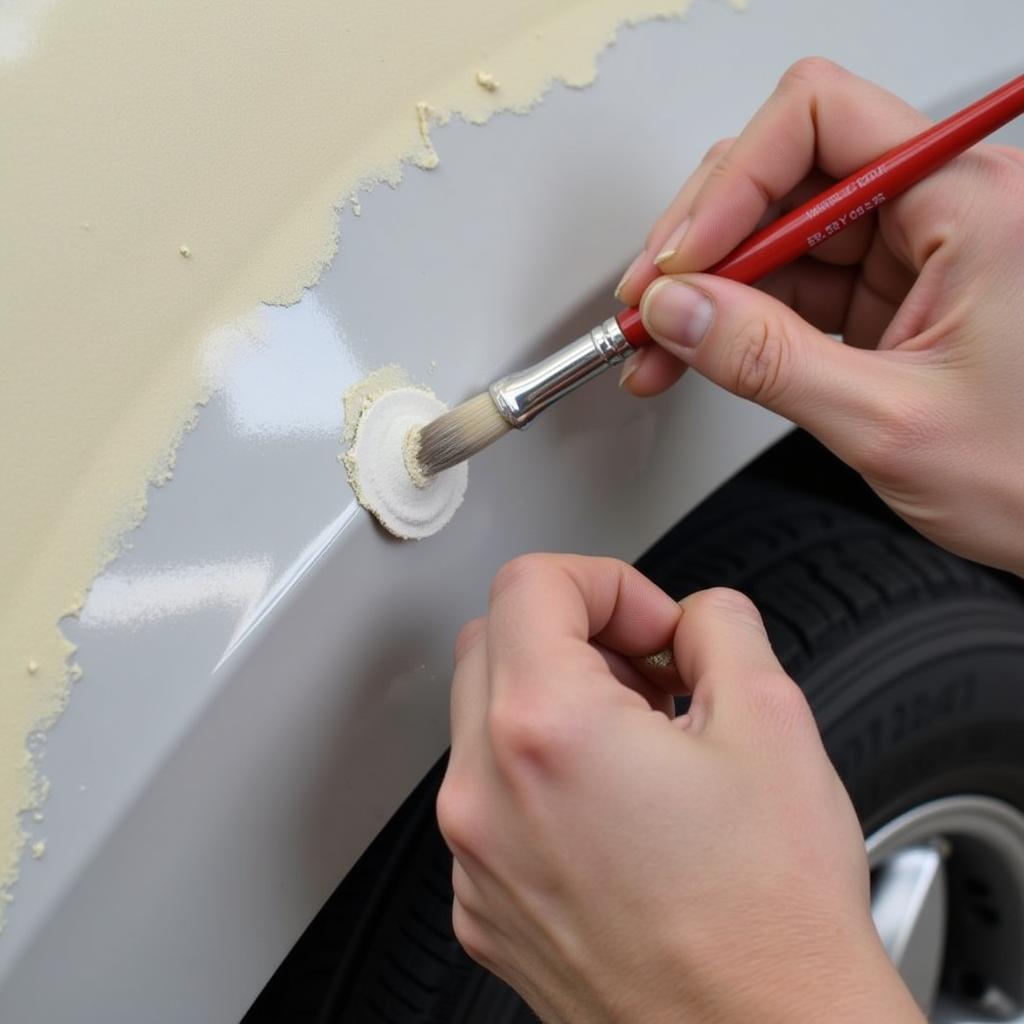 Applying primer to the car paint chip
Applying primer to the car paint chip
Applying Touch-Up Paint: The Art of the Match
Carefully apply the touch-up paint to the primed area, ensuring a smooth and even coat. You might find resources like car repair paint matching helpful in getting the right shade for your car. Use multiple thin coats instead of one thick coat to avoid drips and ensure even coverage. Let each coat dry completely before applying the next. Patience is key here for achieving a seamless finish.
Sealing with Clear Coat: Protection and Shine
Once the touch-up paint is dry, apply a thin layer of clear coat to protect the paint and give it a glossy finish. This also helps blend the repaired area with the surrounding paint.
If you’re looking for affordable options, explore car chip paint repair cost for a better understanding of the expenses involved.
Finishing Touches: Blending and Buffing
After the clear coat has dried, use rubbing compound and a soft cloth to blend the repaired area with the surrounding paint. This step removes any imperfections and creates a seamless transition. Finally, apply a coat of wax to protect the repair and restore the shine to your car’s finish. For those in specific areas, you can even look into small paint repair jobs for cars palm springs area for localized services.
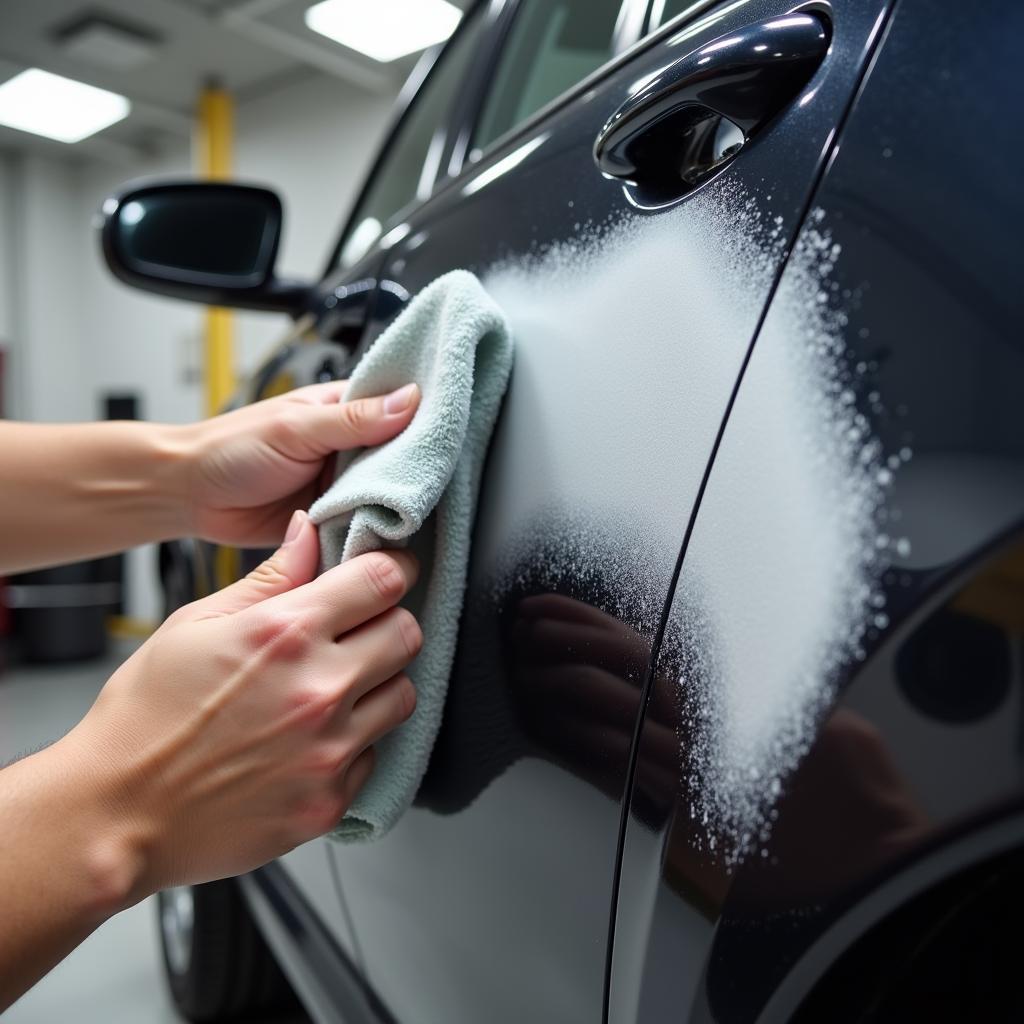 Buffing the repaired car paint chip
Buffing the repaired car paint chip
Conclusion: A Job Well Done
Repairing rusted paint chips on your car might seem daunting, but by following these steps, you can effectively protect your vehicle from further damage and maintain its appearance. Remember to be patient, use quality materials, and take your time with each step. By addressing these small issues promptly, you can prevent more significant and costly repairs down the road. Don’t let rust win – take control and keep your car looking its best. You can also check out more on rust patch paint repair car for additional information.
FAQ
- Can I use any type of primer? No, use automotive primer specifically designed for cars.
- How long does the repair take? It depends on the size and depth of the rust, but generally, allow a full day for the process, including drying times.
- What if the rust is deep? If the rust has penetrated the metal significantly, it’s best to consult a professional body shop.
- Do I need to apply clear coat? Yes, clear coat protects the paint and provides a glossy finish.
- How can I prevent future rust? Regular washing and waxing can help prevent rust.
Common Situations
- Small rock chips: These are common and should be addressed quickly to prevent rust formation.
- Rust around wheel wells: This area is prone to rust due to exposure to road salt and debris.
- Rust on the undercarriage: This requires professional attention due to its inaccessibility.
Further Exploration
Consider exploring topics like “preventative car maintenance” and “DIY car detailing” for more car care tips.
Need Help?
For assistance, contact us via WhatsApp: +1(641)206-8880, or Email: [email protected]. Our customer support team is available 24/7.

